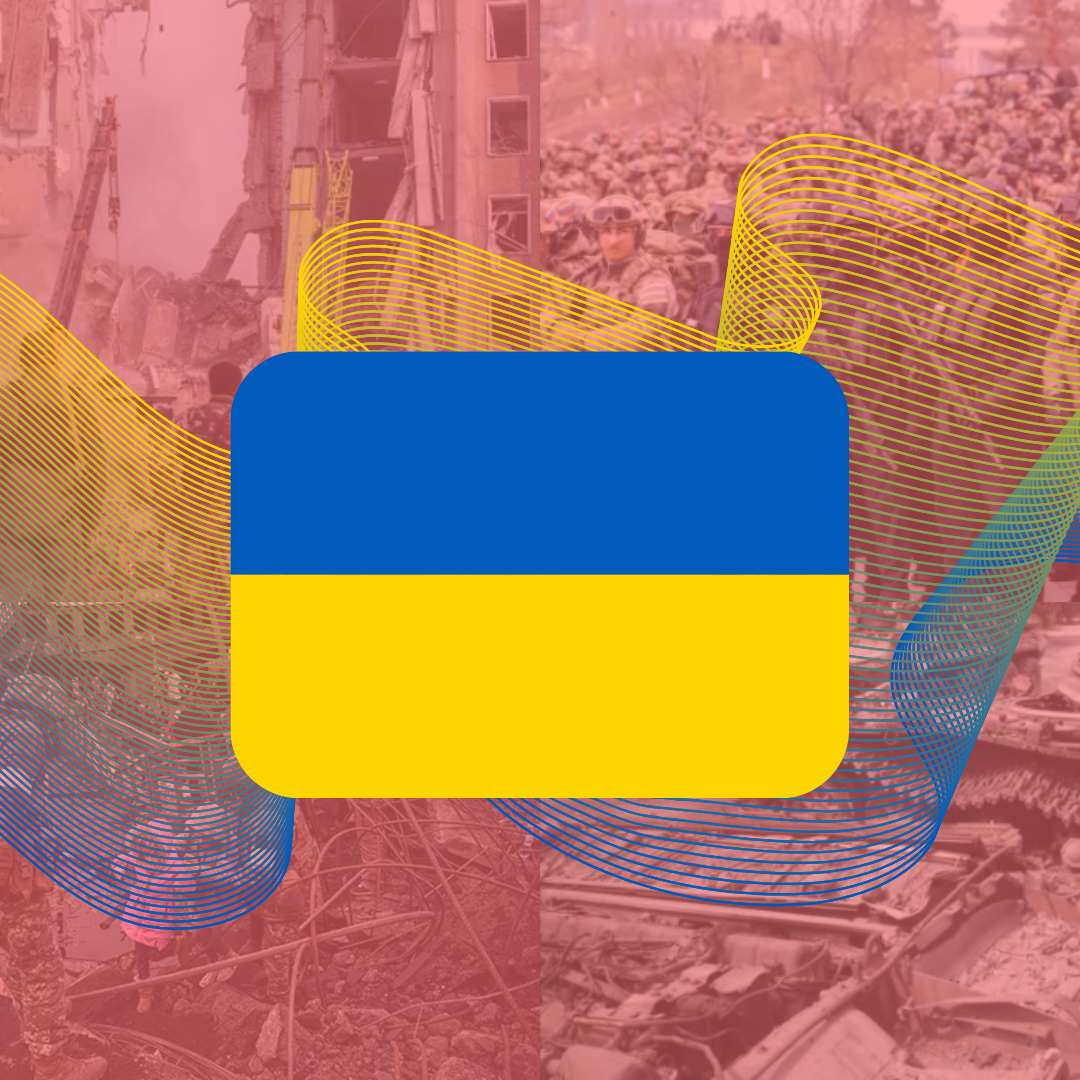The horrors of war: Ukraine
Writer: Ria
Editor: Eleonora Burei
Graphic designer: Pat Sevikul
Any military action necessarily brings destruction, pain, fear, and lost lives. The situation in Ukraine is no exception. News about war crimes is increasingly appearing in the media. What's happening?
In early April, video recordings from surveillance cameras from the offices of the express delivery company SDEK, located on the border with Ukraine, appeared on the Internet. They allegedly depicted the Russian military sending televisions, clothes, tools, washing machines, phones, and other things to Russia and Belarus, where, according to some reports, they subsequently traded stolen goods. Reports of looting by the Russian military appear throughout the war. There are both personal testimonies of residents of Ukraine and interceptions of conversations of Russian soldiers published by the Security Service of Ukraine (there is no way to confirm their authenticity). For example, in one of these recordings, a Russian says that his colleagues "carry everything with bags", and he himself "slightly picked up" samples of cosmetics, women's sneakers, and clothes — clarifying that "a sports family lives here".
However, the most convincing evidence of possible looting was the videos from webcams from the offices of the SDEC with people in military uniforms; the first of them appeared in early April. On the sleeves of some parcel senders, the chevrons of Russian troops can be seen. In international law, pillage (that is, looting of the dead and wounded on the battlefield, theft of abandoned property) is considered an international war crime.
Sexual violence in history has often accompanied various wars and conflicts and, according to modern international law, is considered a war crime. Information about such incidents is included in reports on the observance of human rights during conflicts. In the liberated regions and cities of Ukraine, local residents and journalists find evidence of sexual violence by Russian servicemen. The number of reports of rapes is increasing every day, but it will not be easy to understand the real scale of what was happening. While the Prosecutor General's Office of Ukraine announced the beginning of the investigation of only the first rape case, volunteer organizations and human rights activists undertook to collect evidence from the victims.
According to the deputy of the Bucha city Council Ekaterina Ukraintseva, the fighting in the city began on February 24-25, and on March 4 a column of Russian military equipment passed through the central street. The city was completely captured on March 5.
As a result of the regular negotiations of the delegations of Russia and Ukraine, on March 30, Russian troops began to withdraw from the suburbs of the Ukrainian capital.
On April 1, the mayor of Bucha, Anatoly Fedoruk, announced the liberation of the city, on the same day Ekaterina Ukraintseva reported that the AFU troops had entered the city and were preparing to clean it up. On April 3, the Ukrainian military resumed control of the city.
In addition, on April 3, journalists and representatives of the Ukrainian authorities reported dozens of corpses lying on the streets of the city. Some of them had their hands tied behind their backs. Shocking photos were shared with the public by the President of Ukraine. Photos of the dead in civilian clothes, sometimes with their hands tied, were also published in the Western press. AFP correspondents at the same time said that they saw at least 20 bodies only on one of the streets of the city. They assumed that the bodies had been lying like this for several days. The mayor of Bucha told AFP journalists that the Ukrainian authorities buried 280 people in mass graves in Bucha after regaining control of the territories. The Prosecutor General of Ukraine reported on April 3 that 410 bodies of dead civilians were taken out of 3 liberated districts of the Kyiv region.
The Ministry of Defense of the Russian Federation quite expectedly disavowed all the accusations in its favor. They said that the photos and videos from Bucha are another provocation and staging for the Western media.
On March 28, foreign media covered the topic of torture carried out by the Ukrainian military against Russian prisoners. The video, which depicts scenes of mutilation of half-dead people, was filmed in the village of Malaya Rogan, Kharkiv region. In the frames of the military film, captured soldiers of the Russian Armed Forces lie face down on the ground. Some of them have bags on their heads. The operator passes between them and in turn opens the heads of wounded servicemen, each of whom clearly shows traces of beatings. One of the soldiers shows no signs of life, which is rudely noted by the authors of the video. The prisoner's body is covered with bloodstains. It is not known whether they appeared during the clash or were received here. Several APU soldiers are moving between the prisoners. The video changes the plan: now it shows how other prisoners get out of the car. A Ukrainian soldier shouts "Are there any commanders among you?" Then he hurries the prisoners. Because of their slowness, he becomes enraged and consistently shoots at the legs of three people. At the end of the video, the screams of people who fell to the ground because of their short limbs can be heard.
On April 7, a video was distributed showing the AFU soldiers finishing off the Russian military with their hands tied behind their backs and mutilated throats. Hands behind their backs mean that the soldiers were already prisoners at the time of the terrible massacre.
The Ukrainian authorities stated that residents of the occupied cities of Ukraine were forcibly deported to the most depressed areas of Russia and banned them from leaving the country for at least 2 years. The Russian authorities called this another provocation and stated that all residents of Ukraine arriving in Russia came voluntarily in order to escape the military conflict, they are provided with the necessary assistance and social support.
"Kadyrovites", as they call the servicemen of the Republic of Chechnya which is officially a part of Russia, shoot Russian wounded soldiers in order not to evacuate them, this is reported by sources in the FSB of some officers who are against the war.
According to their data, on March 12, near the town of Borodyanka (Kyiv region), captured by the Russian occupation forces, "Kadyrovites" shot 12 wounded Russian servicemen who were supposed to be evacuated to the territory of Belarus.
Earlier it was reported that the "Kadyrovites" are mainly used as a barrage unit, who are ordered to shoot anyone who tries to give up positions and move back or refuses to go into battle.
Thus, the war is a terrible and shocking event. However, in the 21st century, an information war is also being waged - governments of different countries are spreading contradictory information that is difficult to verify. Therefore, it is always necessary to turn to several reliable sources and think critically.
Sources
https://www.the-village.me/village/city/situation-city/291949-maroderstvo-russia


